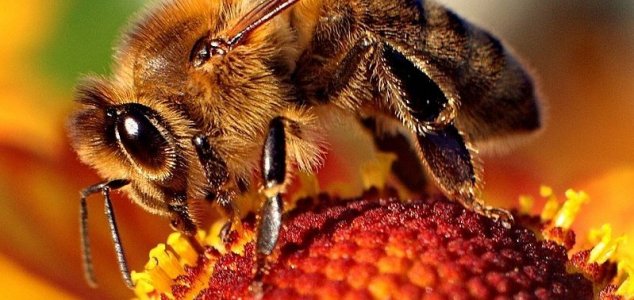Nature & Environment
January 23, 2021 · 2 comments
2 comments

Where have all the bees gone ? Image Credit: CC BY-SA 4.0 Maciej A. Czyzewski
Now a new study from the Consejo Nacional de Investigaciones Cientificas y Tecnicas (CONICET) in Argentina has revealed that, since the 1990s, as much as a quarter of all known species of bees have stopped appearing in global records, despite the number of records overall being much greater.
While this doesn't necessarily mean that all those bee species have gone extinct, it does seem to suggest that they are no longer being observed living in the wild.
"With citizen science and the ability to share data, records are going up exponentially, but the number of species reported in these records is going down," said study first author Eduardo Zattara of the Pollination Ecology Group from the Institute for Research on Biodiversity and the Environment.
"It's not a bee cataclysm yet, but what we can say is that wild bees are not exactly thriving."
"Figuring out which species are living where and how each population is doing using complex aggregated datasets can be very messy. We wanted to ask a simpler question: what species have been recorded, anywhere in the world, in a given period? "
In addition to identifying an overall decline in bee populations over the last 30 years, the researchers also discovered that certain bee families had declined more than others.
"It's important to remember that 'bee' doesn't just mean honeybees, even though honeybees are the most cultivated species," said Zattara.
"Our society's footprint impacts wild bees as well, which provide ecosystem services we depend on."
Source: Phys.org | Comments (2)
Quarter of all bee species missing since 1990s
By T.K. RandallJanuary 23, 2021 ·
 2 comments
2 comments
Where have all the bees gone ? Image Credit: CC BY-SA 4.0 Maciej A. Czyzewski
A new study has revealed that 25% of all known bee species have not been seen in as much as 30 years.
The global decline in bee populations has been one of the most enduring mysteries of the 21st Century. Even today, scientists are still struggling to explain exactly what has been causing it.Now a new study from the Consejo Nacional de Investigaciones Cientificas y Tecnicas (CONICET) in Argentina has revealed that, since the 1990s, as much as a quarter of all known species of bees have stopped appearing in global records, despite the number of records overall being much greater.
While this doesn't necessarily mean that all those bee species have gone extinct, it does seem to suggest that they are no longer being observed living in the wild.
"With citizen science and the ability to share data, records are going up exponentially, but the number of species reported in these records is going down," said study first author Eduardo Zattara of the Pollination Ecology Group from the Institute for Research on Biodiversity and the Environment.
"Figuring out which species are living where and how each population is doing using complex aggregated datasets can be very messy. We wanted to ask a simpler question: what species have been recorded, anywhere in the world, in a given period? "
In addition to identifying an overall decline in bee populations over the last 30 years, the researchers also discovered that certain bee families had declined more than others.
"It's important to remember that 'bee' doesn't just mean honeybees, even though honeybees are the most cultivated species," said Zattara.
"Our society's footprint impacts wild bees as well, which provide ecosystem services we depend on."
Source: Phys.org | Comments (2)

The Unexplained Mysteries
Book of Weird News
AVAILABLE NOW
Take a walk on the weird side with this compilation of some of the weirdest stories ever to grace the pages of a newspaper.
Click here to learn more

Support us on Patreon
BONUS CONTENTFor less than the cost of a cup of coffee, you can gain access to a wide range of exclusive perks including our popular 'Lost Ghost Stories' series.
Click here to learn more
Science and Technology
United States and the Americas
Spirituality, Religion and Beliefs
Extraterrestrial Life and The UFO Phenomenon
Total Posts: 7,780,293 Topics: 325,683 Members: 203,960
Not a member yet ? Click here to join - registration is free and only takes a moment!
Not a member yet ? Click here to join - registration is free and only takes a moment!



































Please Login or Register to post a comment.